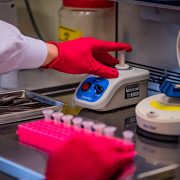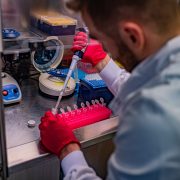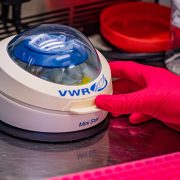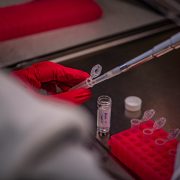Discover how science led us to develop a pilot study of a vaccine for EEHV, and the next steps on our journey to preventing this deadly virus found in young elephants.
Elephant endotheliotropic herpesvirus (EEHV) is a deadly virus that affects young Asian elephants globally. Over the years our excellent partners have worked with us to develop an array of treatments for EEHV, but the ultimate goal is to develop a vaccine.
How does a virus work?
Like every other virus, EEHV is a tiny particle that simply aims to reproduce. But it can’t do this on its own – it needs to hijack the cells of a living being, turning them into factories that churn out new copies of the virus at an incredible rate.
All animals have an immune system that acts as a defence system to protect us from a virus threat. When infected with a virus our cells then:
- Call for aid by displaying a signal on their surface that is unique to the virus attacking it.
- This signal tells our immune system defenders (white blood cells), the identity of the attacker.
- This sparks a chain reaction to deal with the virus before it becomes a life threatening infection.
- The immune system then forms a memory of the intruder so that it is prepared to fight a much quicker battle should it return.
Some viruses, like EEHV, are particularly good at spreading and are incredibly damaging once spread. They can overwhelm the developing immune system of a young elephant before it has the chance to mount a full-scale defence.
Developing a vaccine
Vaccines work by giving our immune system a practice run at fighting a disease in a safe environment, equipping its long-term memory with the knowledge of how to fight the real infection.
There are many ways to develop a vaccine, and our long partnership with the Animal & Plant Health Agency and the University of Surrey has seen us working together on two in particular.
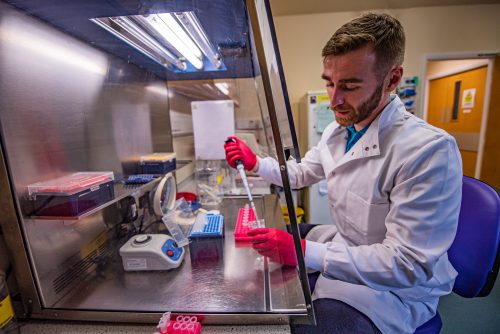
The MVA Vaccine
An MVA vaccine has saved countless lives by tricking our immune system. Developed nearly 50 years ago, this vaccine can change how a virus is seen by our natural defences.
By removing the DNA that makes EEHV look like EEHV to the immune system, and placing it into a harmless form of a different virus, called ‘vaccinia’, we have a way to trick the immune system. It quickly wipes out the vaccinia, and in the process learns what EEHV looks like should the real virus surface.
Protein Vaccines
With this vaccine, we’re simply exposing the elephant’s defences to the specific proteins that cells would create when infected with EEHV, and examining if it responds. If all goes to plan, the immune system will form a long-term memory that will one day instruct a rapid response to these proteins when they’re detected in the body – not because we’ve put them there, but because an EEHV infection is beginning to destroy live cells.
How close are these vaccines to completion?
We’re at the beginning. This great collaboration of researchers has got us to the point where we have two vaccine prototypes that we can test in a pilot study. We need to confirm the vaccines are first and foremost safe, and secondly, that they can reliably stimulate an immune response.
So far, in this pilot we’ve given the vaccines to the Hi-Way herd’s bull elephant, Aung Bo, and tested small amounts of his blood for an immune system reaction. After vaccination, if we expose Aung Bo’s white blood cells to the markers of EEHV, we’d expect to see a rapid and strong immune reaction. We were encouraged to see some signs of this in the test, but it’s far too early to tell if this means the vaccine would prevent a full-scale infection
A full-scale trial awaits us now to build on this knowledge, where, in-time, we’ll learn whether this research is successful in protecting young elephants from EEHV both in the wild and in breeding programmes around the world.
This is a landmark moment on that long road, and one to celebrate. Stay with us on this journey to find out how these trials progress.
Your part in the story
By spreading the word of this EEHV vaccine research programme, and by visiting the zoo, you’re making a direct contribution to solving a major issue in elephant conservation research.
If you’re reading this and itching for more information or to support us even further, take a look at our Never Forget campaign. Any donations you make will go directly to the science that’s making these vaccines possible.
EEHV IS A THREAT TO YOUNG ELEPHANTS GLOBALLY
We’re part of a global community committed to researching EEHV and finding ways to treat and prevent it. The funding that we’ve received has already supported so much, but more research is still needed urgently.
You’re support could help us to irradicate this disease and save elephants all over the world.
